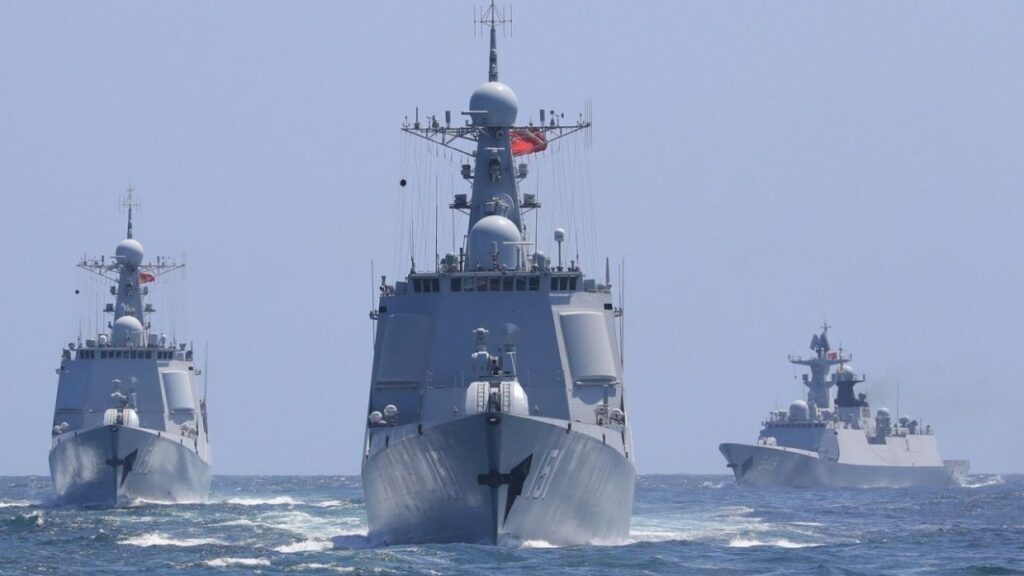A high-performance naval ship design system in China is drawing on computing resources across the country by connecting to a platform initially designed and used as an internet for smart vehicles, according to a Chinese research team. In one test run, numerical simulation software used by Chinese naval contractors to develop warships enlisted more than 14,000 Intel CPUs in eight industrial servers across China. It took the software – called Naval Hydrodynamics Oriented CFD Solvers – just eight hours to solve a challenging wave simulation to see how they could affect a large ship’s performance at high speed.
The industrial cloud platform was originally developed as an “Internet of cars” to help with vehicle data streaming, traffic management and autonomous driving via 5G and optic networks. It gave the naval researchers expanded bandwidth, reaching 100Gbps. A traditional supercomputer commands a fixed number of CPUs.
But this limit does not apply to China’s rapidly growing industrial cloud, according to the researchers. “Computational efficiency increases linearly. In general, the greater the number of cores, the shorter the time consumption,” said the research team led by Wang Jianchun, a senior computer scientist with the China State Shipbuilding Corporation, a naval contractor that has built China’s aircraft carriers and other large warships.
“This unprecedented application paves the way for solving large-scale vessels’ hydrodynamic problems with home-made software,” said Wang and his colleagues in a peer-reviewed paper published in the Chinese-language Journal of System Simulation on Friday. “The industrial cloud platform integrates different types of high-performance computing resources built in different periods and different regions to realise a new model of application for paradigm-shift innovations. It points out a clear direction for real-life applications in the future.
” China has built a vast advanced information infrastructure over the past decade. By the end of last year, 1. 7 million 5G towers were up and serving 420 million citizens, the Chinese Ministry of Industry and Communication Technology said in June.
This is 10 times more than the total number of cell towers in the United States, about half of which had not yet been upgraded to 5G, according to a communication industry estimate. Economic activities based on this information infrastructure contributed more than 40% of China’s GDP last year, said the ministry. At least 70% of Chinese factories, which produced nearly a third of the world’s manufactured goods by value last year, will connect to industrial cloud platforms before 2025 to increase efficiency and quality, according to the central government’s plan.
Some provinces, such as Anhui, require more than 70% of new vehicles to be connected to the internet of cars within three years. Using an industrial cloud for naval projects has many challenges, said Wang. The Internet of cars was formed by many computer nodes running different operating systems on different hardware.
The command line to execute the same calculation job may vary from one node to another. The simulation software also requires many jobs to run simultaneously on different platforms, making the process even more complex. Wang said the team had built a powerful “library” to generate the right command lines for a specific computer system.
And the library was smart – if the naval software ran into an error, it would come up with an alternative command instantly and persistently until the calculation process went through. The test results suggested that the naval software could run on most known industrial computer systems and supercomputer centres, Wang’s team said in the paper. To meet the increasing demand for calculation and data storage, China has built more than a third of the world’s most powerful supercomputers, nearly twice as many as those in the US, according to the Top500 list.
The latest, fastest supercomputers in China do not appear in the international ranking because the government withholds data on their performance. Earlier this year, Beijing approved a three-year project to build 18 new megadata centres, mostly in western regions with low population density but rich energy resources. Many of these data centres will be built and operated by tech giants such as Huawei and Tencent.
Yang Xinmin, a computer scientist with the China Electronics Technology Group Corporation, the nation’s biggest defence contractor of communication devices, has revealed a plan to “fuse” the Chinese military’s command information system with the industrial Internet. The hybrid system could “maintain control of the Internet of things while issuing military commands,” Yang and his colleagues said in a paper published in the domestic peer-reviewed journal Command Information System and Technology in April. The researchers said the purpose of integration was to increase AI performance during a war.
“This will pave the way for the systematic construction of smart military camps, smart transport, smart cities and combat management projects,” said Yang in the paper. But the research team said the existing industrial internet had too many security loopholes. It could only meet the military’s security requirements if fundamental changes or upgrades were made.
– South China Morning Post.
From: thestar_my
URL: https://www.thestar.com.my/tech/tech-news/2022/08/04/chinas-naval-computer-enlists-internet-of-cars-for-more-power-to-design-large-warships
